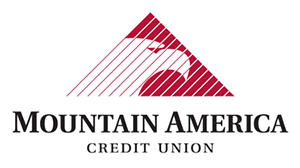Massachusetts PTA Position Statements are official documents outlining the opinion, will, or intent of the association to address state and national problems, situations, or concerns that affect children and youth and require state action to seek resolution on the issue. Massachusetts PTA has adopted hundreds of position statements on a wide variety of national education, health, and safety issues since its first convention in 1910.
The following is a list of a few of Massachusetts PTA’s position statements. For questions about these position statements or help finding others, contact Massachusetts PTA’s Legislative and Advocacy Committee, at advocacy@masspta.org.
Position Statements:
To view National PTA’s Position Statements click here.
| Massachusetts PTA Position Statements |
| Teacher Vaccination March 2021 |
| Back to School 2020-2021 |
| 2016 Position Statement on Raising the Cap for Charter Schools |
Resolutions:
To see National PTA’s Resolutions click here.
| Massachusetts PTA Resolutions |
| School Committee Resolution on Covid-19 Template (docx) |
| Stop the Youth Vaping and E-Cigarette Epidemic (pdf) Resolution of the Massachusetts Parent Teacher Association (PTA) Stop the Youth Vaping and E-Cigarette Epidemic (webpage) |
1. Public Education
a. After School/Extended Day
i. Support, expand, and improve access to quality before and after school programs.
b. Arts
i. Support, expand, and improve children’s access to quality arts and cultural programs.
ii. Support, expand, and improve arts literacy for all students.
iii. Support, expand, and improve activities that prepare teachers to integrate the arts into the curriculum of other academic subjects to supplement and engage student learning.
iv. Support, expand, and improve opportunities to use arts education to expand and enhance access to the core curriculum
v. Support, expand, and improve science, technology, engineering, arts, and mathematics (STEAM) initiatives.
c. Bilingual Education
i. Support, expand, and improve children’s access to quality bilingual learning opportunities, both in their native languages and in English.
d. Early Childhood Education
i. Support, expand, and improve access to quality early childhood education.
ii. Support, expand, and improve access to full day kindergarten.
e. Education of the Whole Child
i. Support, expand, and improve resources to ensure schools give every child access to a rich array of subjects that address children’s basic emotional and physical needs.
ii. Support, expand, and improve resources to ensure children are healthy, engaged, supported, challenged, and safe.
f. Family Engagement and Partnerships
i. Support, expand, and improve school linked parent resource centers.
ii. Support, expand, and improve methods to encourage teachers to engage parents.
iii. Support, expand, and improve communications to parents in their native languages.
iv. Support, expand, and improve parent involvement policies in state legislation.
v. Support, expand, and improve efforts to create effective and accountable parent involvement provisions in state regulations and guidance.
g. Funding
i. Support, expand, and improve efforts that ensure public funds are used exclusively for public schools.
ii. Support, expand, and improve efforts to increase funding to provide quality education for all students.
iii. Support, expand, and improve efforts to create a fair, stable, and adequate revenue system.
h. Higher Education
i. Support, expand, and improve policies and programs in schools that specifically enumerate protection for students who are targeted for harassment.
ii. Support policies and programs that promote respect for diversity, understanding, tolerance, and acceptance.
iii. Support, expand, and improve inclusive learning environments for all students.
i. School Governance
i. Support, expand, and improve opportunities that welcome all parents into the school free from language, cultural, and socioeconomic barriers.
ii. Support, expand, and improve opportunities for parents to become knowledgeable about the governance and operations of schools.
iii. Support, expand, and improve opportunities for parents to participate in school based decision making.
j. Special Education
i. Support, expand, and improve programs and funding to provide every child with a Free, Appropriate Public Education (FAPE).
ii. Support, expand, and improve access to transition services for students.
k. Teacher Quality/Qualifications
i. Support, expand, and improve programs that recruit, develop, and retain diverse and highly qualified educators.
l. Technology in Schools
i. Support, expand, and improve opportunities that contribute significantly to the creation of a flexible, adaptable, and knowledgeable workforce.
ii. Support, expand, and improve school libraries to enhance education, technology, and communication.
iii. Support, expand, and improve opportunities for students to succeed in the innovation economy.
iv. Support, expand, and improve digital literacy among students including awareness of digital technology safety issues, as well as educational opportunities.
v. Support, expand, and improve efforts that increase knowledge and skills for students to access, analyze, evaluate, and create a variety of media messages from the internet and other media sources.
m. Testing/Accountability
i. Support efforts to facilitate the use of multiple assessments for evaluating student academic growth and performance and decrease the emphasis on highstakes testing, assuring diagnostic, prescriptive use of data.
2. Safe and Nurturing Environments
a. Bullying
i. Support initiatives that address the prevention, intervention, and elimination of bullying and harassment.
ii. Support, expand, and improve policies and programs in schools that specifically enumerate protection for students who are targeted for harassment.
iii. Support policies and programs that promote respect for diversity, understanding, tolerance, and acceptance.
iv. Support, expand, and improve inclusive learning environments for all students.
v. Support, expand, and improve school policies that ban slurs directly or indirectly toward a person’s unique characteristics, including, but not limited to, religion, race, sexual orientation, ethnicity, socioeconomic status, gender identity, physical ability or size, or other minorities, including those who are a minority sexual orientation.
vi. Support, expand, and improve best practices to guide schools in ensuring a safe and supportive environment for Lesbian, Gay, Bisexual, Transgender, and Questioning (LGBTQ) students.
b. Comprehensive Health Education
i. Support, expand, and improve comprehensive health and sexual education in schools, while respecting beliefs and preferences of parents.
c. Environmental Health and Safety
i. General: Support, expand, and improve efforts to protect children from toxic exposures that cause preventable illnesses and disabilities.
ii. Indoor Air Quality/School Construction: Support, expand, and improve efforts to maintain and modernize school facilities.
iii. Support, expand, and improve initiatives that promote walking and safe methods of transportation to and from school.
d. Health Care Access and Quality
i. Insurance: Support, expand, and improve health insurance coverage and access for children in low income families.
ii. Oral Health: Support, expand, and improve children’s access to dental health programs.
iii. Health Care: Support, expand, and improve quality health care for children.
iv. Public Health: Support, expand, and improve necessary public health and welfare services for children, youth, and families.
e. Mental Health
i. Support, expand, and improve facilities for mental health and measures for broader education in this field.
ii. Support, expand, and improve parents’ and students’ rights and access to mental health services.
f. Healthy Lifestyles: Nutrition, Wellness, and Physical Activity
i. Support, expand, and improve child nutrition, health, and wellness programs.
ii. Support efforts to provide adequate time and opportunity for recess, physical activity and fitness in all schools.
iii. Support, expand, and improve efforts to limit advertising to children in the schools particularly related to the promotion of unhealthy foods and drinks.
iv. Support, expand, and improve access to healthy food choices.
g. Safe Environments
i. Support, expand, and improve policies, procedures, and programs that encourage and enhance the security of children at their educational sites.
ii. Support, expand, and improve efforts to protect children and youth from gun violence.
iii. Support, expand, and improve opportunities to educate adults about responsible firearm use.
3. Community
a. Neighborhoods
i. Support, expand, and improve opportunities for civic engagement.
ii. Support, expand, and improve access to housing, food security, education, employment, and health care.
iii. Support, expand, and improve opportunities to eradicate homelessness.
b. Climate Change
i. Support, expand, and improve understanding for conservation of natural resources.
c. Consumerism
i. Support efforts to protect children from exploitative marketing through advocacy, education, and collaboration.
d. Immigration
i. Support, expand, and improve pathways to citizenship.
e. Parks and Recreation
i. Support and improve protection and maintenance of parks and recreation areas and expand access to nature, parks, and recreation areas.
f. Voting
i. Support, expand, and improve efforts that give citizens a better understanding of voting rights and encourages them to exercise the right to vote.
g. Juvenile Justice
i. Support, expand, and improve efforts to ensure truant youth are kept out of secure juvenile corrections facilities.
ii. Decrease over-reliance on secure detention and promote effective family focused, school based interventions for truant youth.
iii. Support, expand, and improve funding for youth reentry programs.
iv. Support, expand, and improve efforts to ensure children convicted in adult court may be placed into juvenile facilities instead of adult prisons.
v. Ensure Jail Removal and Sight and Sound Separation core protections are extended to all children under 18 years of age who are held pretrial, regardless of whether they are charged in juvenile or adult court.
[1] “Families” and “parents” are used interchangeable to refer to adult caregivers who are responsible for a student.









